Millie Bowers Johnson: Nimble Fingers
Defense work during World War II caused a demographic shift in Minnesota and across the nation as men and women migrated to cities where munitions plants, shipyards and aircraft factories offered civilians work and a chance to support the war effort. Millie Bowers Johnson, a native of Bell Creek, Minnesota, had been working as an assistant to the local school nurse when she was given an opportunity to learn architectural drawing and riveting. Armed with her new skills, Millie got a job at the B-24 Modification Center at St. Paul's Holman Field in 1943 and moved to the big city. She remembered that move and her wartime work in a 2008 interview with historians Ben Petry and Andy Wilhide.
Oral History Excerpt
BP: What were you doing when you heard about Pearl Harbor? Where were you?
MJ: I was at home. I remember it was on a Sunday. We had been to church that day. It was in the afternoon, I think...I was home, and I remember my mother just really crying... I was 21 when that happened, so I had a 19-year-old and a 17-year-old brother and my mother was worried, she was really worried when she heard that. So I remember her being so upset…and you know, I think we all were sad when we heard what was happening. I don’t remember very much after that except that I think we knew… That’s when I started writing about all the boys going. I have all those articles about the Faribault [boys] taking off for the service in the National Guard.
BP: So the town was emptying out.
MJ: Yes it was. It really was. That next year made a change… Of course, then I went from working for the school nurse - I took this course in architecture and riveting to go up to [St. Paul]. In ’42 was when I worked up at Holman Field. It was the WPA. That’s why I think President Roosevelt was such...he’s the one that started the WPA, [Works] Progress Administration, I think it was called, where people were given jobs – and it was just the greatest thing, I think, to happen in those days. I had the opportunity to take this course in Architectural Drawing to become a riveter. So my girlfriend in Faribault, without my knowledge, signed up for this, too, and Dorothy Adams signed up, my close friend,...and then a girl from Albert Lea. We were four of us that were sent down to Austin, Minnesota.
They put us in the Grand Hotel in one huge room where all four of us stayed. We had to go to classes at the high school...and we would go from about eight to noon, nine to noon, I think, and then we’d have lunch. I think they gave us lunch at the high school, if I’m not mistaken, and then we’d go back to class from one to three, and then we were off – we were through for the day, and so we had a fun time in Austin. We went to the Terp Ballroom – all their Big Band music.
So this was about eight weeks; this course was eight to ten weeks, I think, in Austin - and, of course, riding back home by bus because we had no car at that time. My car was long gone, that old Ford. So we would take the bus, my girlfriend and I, back and forth to Faribault. Well, one of my girlfriends, Dorothy, decided she just didn’t like this drawing and stuff and so she said, “I’m dropping out.” So she dropped out and went to work for Hormel’s meat [packing] plant, and she was there, I think, for 30 years. ...So there were three of us, then, that finished the course. I don’t know what happened to the one gal...but my friend, Corky, and I finished, and we went up to Holman Field and applied for the job of riveter. She and I. Just the two of us.
BP: And the company you were working for? Northwest?
MJ: Well, it was through Northwest Airlines that we put our application in, but we worked at Holman Field. That was in February of ’43 that I started. My girlfriend, Corky, and I lived with her aunt in Minneapolis off Lake Street and rode the streetcar to work. We had three different shifts; two weeks of 8-4, two weeks of 4-12 and two weeks of 12-8, which we called the graveyard shift. So we just rode back and forth to [work] on the streetcar. Those were wonderful. I wish they had streetcars [now] – they were wonderful. They really were. For entertainment we went to a lot of movies in those days, or the Prom Ballroom. [At] some of the theaters there were good entertainers. I think the Andrews Sisters were there, entertaining, and also Big Bands…Woody Herman…
BP: So you saw the Andrews Sisters?
MJ: We saw the Andrews Sisters, um hum. They had live entertainment in those days at some of the theaters downtown. Oh, it was great, because we heard their songs, you know, over the war years, we were beginning to hear all those wonderful songs. I loved the Andrews Sisters. They were great.
I was going to tell you, we made about – the salary we made was about $50.00 a week, which was a good salary in those days, it was pretty good. But after they took out – oh, they took out for war bonds, and they took out for Social Security, victory checks – a number of checks – it ended up about $42.00 a week that we had.
BP: And what did you do with your money?
MJ: Well, kind of put it away. We were fortunate that we didn’t have to pay any room rent, because we stayed with my friend’s aunt and she was so happy to have us. Her husband was up in Alaska doing some work for the government and she had two little girls. So we stayed there rent-free, but we contributed to groceries and that sort of thing, so we did help her out, I’m sure. She’s still living, by the way. She lives over in Menomonee, Wisconsin and was just over here a while ago. So it’s so wonderful to see her again, and she’s over 90 years old, but she’s just in great health. So we talk about those days every once in a while, [about] when we lived there.
BP: What was a typical day like at work?
MJ: Well, if I can remember... It was so funny, all the new workers got broken in by having to go to the Parts Department to pick up a part, and I remember this because... I don’t know what they said [the part] was for. So we gals, you know, we’d go down and we’d ask for it and they’d all laugh. The guys that were in the Parts Department would say, “We don’t have any of those right now.” Well, it turned out it was the tube, the relief tube that was on the plane [laughing] and that’s the part of it. So that was their joke on us, you know. The crew chief thought that was a big joke to “break in” the girls. That was one of the things that I remember happening. We didn’t do a lot of using the rivet gun, but we did a lot of putting in rivets and spacing, you know, and more of the architectural work than we did the actual use of the guns. They would fly [the planes] in – pilots would fly them in and then they’d stay around for a day or two until these were finished, and then they’d fly them out again.
I did have a date with one of the pilots one night. I even remember I wrote down [that] we saw the movie, Air Force, of all things. Then we used to go to the roller derby. We used to have those in those days. We really enjoyed that, going to the roller derby. So that was kind of our entertainment in those days. Mostly movies and shows - theater shows - and things like the roller derby. Because usually, when we’d get home after work, we really didn’t care to go out very much unless it was a time that we worked the afternoon shift. So the time that we worked was the most important for us to be doing anything.
AW: Can you describe a little bit what it was like to move from Faribault to Minneapolis?
MJ: Well, yes. My girlfriend had moved to Northfield then and I was living in Faribault, and she said, “Now, you get on the bus,” she said, “and I’m gonna get on in Northfield and we’ll apply up at Northwest Airlines.” Well, I tell you, I was petrified because I was a follower. I was not a leader at all, I was a follower, and if she had not gotten on the bus in Northfield, I would have not gone. I would have gotten off because I was that scared to go anywhere by myself. But she got on, and so we went together and we applied up at the airlines. But that was so funny because I was really very timid.
Of course, we always thought Minneapolis was huge, and when I think [about it] now, it’s amazing how we would ride the streetcar. We lived about eight blocks from the streetcar line – you know, where we got on and got off - and at 12:00 at night we’d get off and walk home and never think anything of it in those days, and feel pretty safe. But I loved the streetcars and thought that was great. In the morning shift it took about maybe 20 minutes to half an hour to go from – we lived in Minneapolis and of course Holman Field is in St. Paul. It took probably close to half an hour, so we’d get a good chance to have a little snooze, too, before we got there.
AW: Did you like living in a bigger city?
MJ: Well, I was there for about a year. I liked it. I liked the activities, and the shows, and the things like that. But otherwise, I don’t know, I didn’t really. I think I would have been happier in a smaller town. That’s why, I guess, I went to a smaller town. I think it was in the fall that I had my appendix out, so I left the airlines for a while and had an appendectomy in Faribault and then after three weeks went back to the airlines again; back to work again. But at about the end of 1943 it started slowing down up there. I think they probably had all the equipment in the planes that they needed. So my girlfriend and I then decided to come to Northfield.
BP: What was the ratio of men to women at the plant?
MJ: We always had...there were crew chiefs of course, [who] were all men. I think a crew probably was about six. I would say maybe two gals and four guys. I think it was maybe less than half, 40 percent probably were the women.
AW: Were you close with the other women workers?
MJ: Oh, yeah, we’d get together every once in a while for a coffee break, of course. I kept in touch with a few of them for a while – six months, maybe, or so – and then you sort of meet new friends, and [I] moved to Northfield, and so I didn’t keep in touch with any of them.
BP: How about war news? While you were working, and on breaks and lunches, did people talk about losing a brother and things like that?
MJ: Yeah, there were people that talked about their brothers in the service. Mostly, there weren’t too many women in those days that were in [the military], although I have a niece who was a WAVE, she was in the WAVES. We...worked pretty much with the same crew most of the time and then went home and that was it. So we never really mingled a lot except for maybe a coffee break once in a while. I don’t recall even getting together afterwards or anything with the people there.
BP: Newsletters, was that a big deal at the plant?
MJ: I don’t recall that there was any. There certainly wasn’t anything put out from the plant itself that I know of – any type of news. I don’t recall that at all. It was very…a lot of security, of course, because we had badges with our picture on it that we had to wear [or we] couldn’t get in.
BP: Did you ever follow the planes that you fixed?
MJ: No, but some of the girls put their names and addresses right under the steering apparatus or something, they’d stick in a name. I wonder if any of them ever heard from anybody or not, I don’t know. No, we never did follow. They ended up, of course, in Tucson, Arizona where that picture was taken. The Pima Air [& Space] Museum in Tucson, where we went for 14 winters - we visited Pima Air Museum quite a few times because all these old planes, all the junk is out there. That’s where that picture of me was taken standing next to the B-24.
BP: So, mainly B-24s.
MJ: Mainly B-24s, um hum. ...You had to be pretty accurate – I mean to get these rivets in there – and we had to be pretty nimble. I never could do it now, that’s for sure. ...That’s why the architectural drawing that we took was pretty complete, because of exact places where we had to put rivets, and they were marked, of course. So we had to be pretty nimble with the fingers. But we never heard any complaints and everything evidently must have worked out, because those planes were used in the war, you know. They went overseas with the gun turrets, so I think they say the B-24 was one of the best bombing planes that they had.
AW: Did you have a uniform of some kind?
MJ: Coveralls. Yeah, those coveralls that I had on in the picture. ...That was taken at the place where I lived, up in the Cities. Of course, I didn’t have my hair tied up, you see. We tied it up [for work].
AW: Did you have a toolbox or anything?
MJ: Nope. Everything was supplied when we got there.
AW: So when did you stop working?
MJ: At the end of 1943 my girlfriend said, “Let’s go to Northfield.” She said, “I have friends living in Northfield.” At that time my mother had moved in with my grandmother, so I didn’t really have my mother to worry too much about. My grandmother was in fairly good health, too, at that time. They moved in together, and so I thought, “Well, I don’t have to go back to Faribault for that reason." So we moved to Northfield.
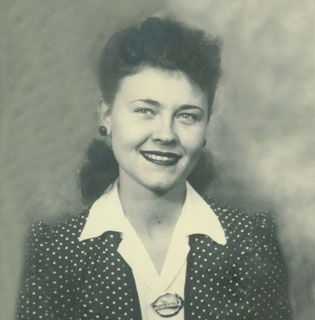
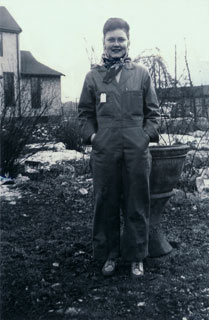
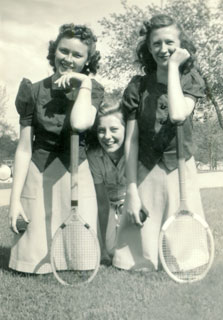
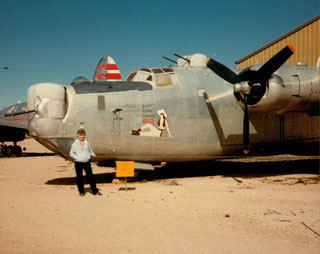
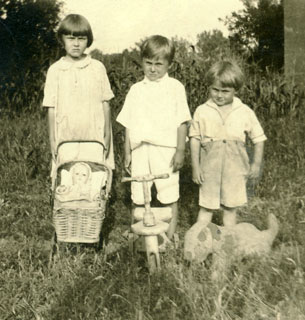
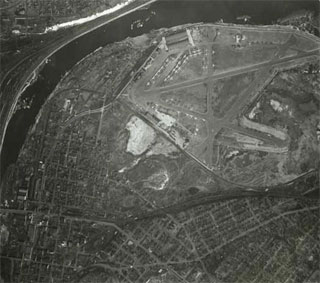
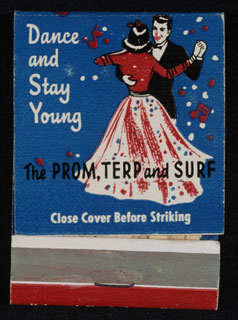

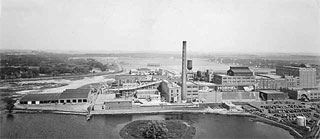
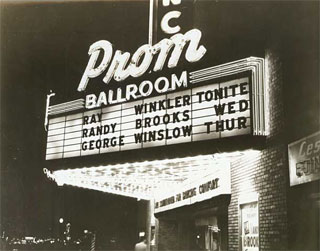
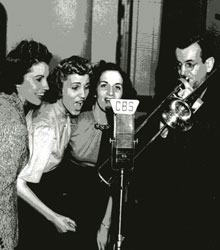
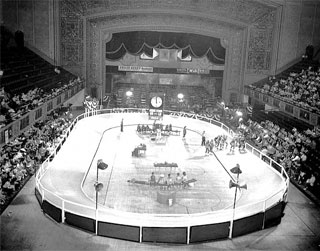

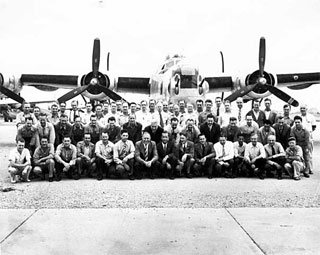
Source
Johnson, Millie Bowers; Ben Petry, Interviewer, Millie Bowers Johnson Oral History Interview, Minnesota's Greatest Generation Project, 2008.


